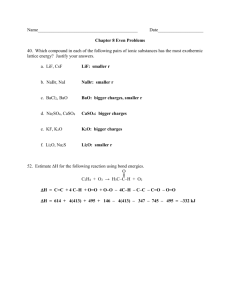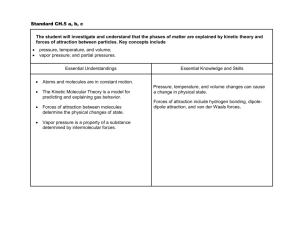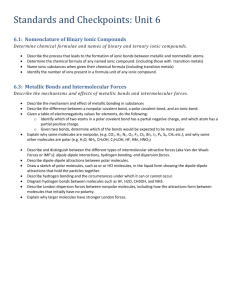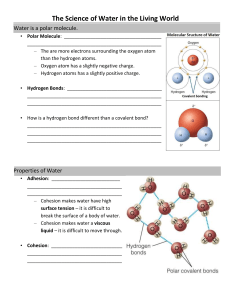Study Guide 201..
advertisement
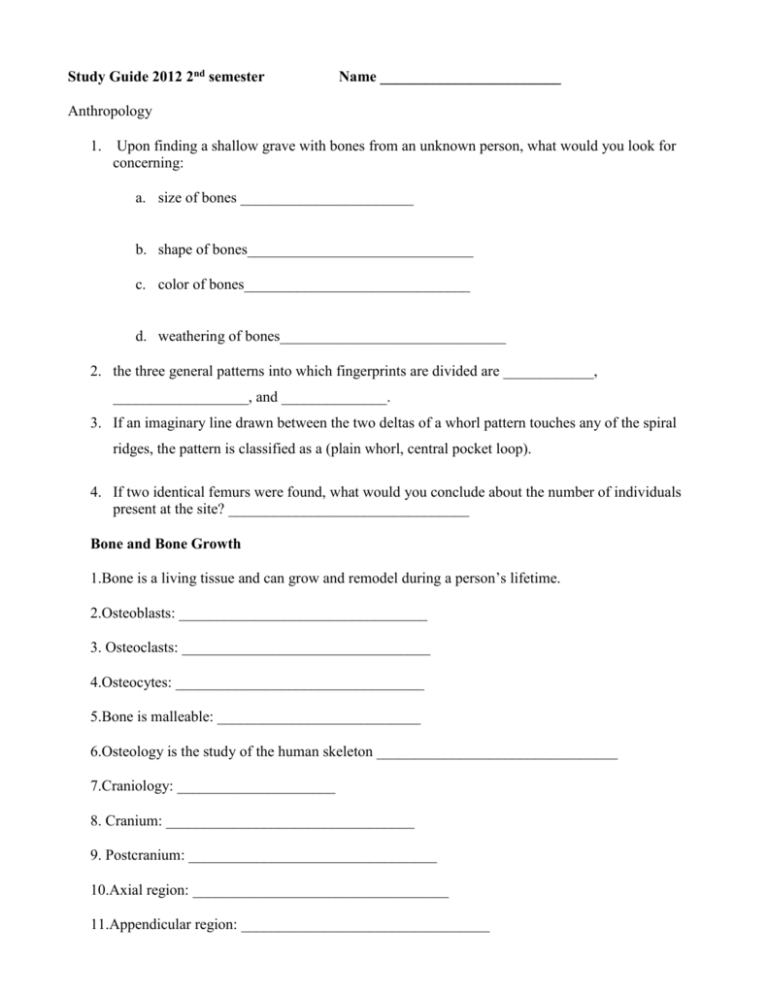
Study Guide 2012 2nd semester Name ________________________ Anthropology 1. Upon finding a shallow grave with bones from an unknown person, what would you look for concerning: a. size of bones _______________________ b. shape of bones______________________________ c. color of bones______________________________ d. weathering of bones______________________________ 2. the three general patterns into which fingerprints are divided are ____________, __________________, and ______________. 3. If an imaginary line drawn between the two deltas of a whorl pattern touches any of the spiral ridges, the pattern is classified as a (plain whorl, central pocket loop). 4. If two identical femurs were found, what would you conclude about the number of individuals present at the site? ________________________________ Bone and Bone Growth 1.Bone is a living tissue and can grow and remodel during a person’s lifetime. 2.Osteoblasts: _________________________________ 3. Osteoclasts: _________________________________ 4.Osteocytes: _________________________________ 5.Bone is malleable: ___________________________ 6.Osteology is the study of the human skeleton ________________________________ 7.Craniology: _____________________ 8. Cranium: _________________________________ 9. Postcranium: _________________________________ 10.Axial region: __________________________________ 11.Appendicular region: _________________________________ 12. Bones articulate with each other at the : _________________________________ 13.Pectoral girdle: _________________________________ 14. Pelvic girdle M vs F: _________________________________ Planes of Orientation: _________________________________ 1. Frankfurt Plane of skull: _________________________________ 2. Median sagittal plane: divides body _________________________________ 3. Dorsal: _________________________________ 4. Ventral: _________________________________ 5. Lateral: _________________________________ Dental Evidence: _________________________________ 1. Used to determine: _________________________________ 2. Those that feel alcohol’s effects the least are __________________ 3.Neuropsychoactive drugs usually contain: ________________ 4.Alcohol ____________neurogenesis 5.Alcohol ___________apoptosis 6.Alcohol ___________memory 7. Memories are formed in the _______________ 8. All of the following are shapes of fingerprints except? a) loops b) whorls c) Arches d) dots (Correct) Chapter eight and nine: Word List: medulla, hair follicle analgesics, depressive, morphine, hashish, lysergic acid depresses, monomer, Tranquilizers, amphetamines, infrared 1. The basic unit of the polymer is the ________. 2. Narcotic drugs are _________ that exert a __________action on the central nervous system. 3. The pattern of an _______________________absorption spectrum is unique for each drug and thus is a specific test for identification. Chapter ten and twelve: Word List: ethyl alcohol, potassium dichromate, blood, urine, plasma, RBC, A, A, B, antibodies, serology, phenotype, AA,BB,AB 1. The most heavily abused drug in the Western world is ____________________. 2. In a Breathalyzer ampoule, the ethyl alcohol reacts with ______________ in a fixed ratio. 3. The boy fluids _____________ and ______________ are both desirable for the toxicological examination of a living person suspected of being under the influence of a drug. 4. __________________ is the fluid portion of unclotted blood. 5. __________________________________ transport oxygen from the lungs to the body tissues and carry carbon dioxide back to the lungs 6. Females have a higher concentration of alcohol in their blood after drinking the same number of drinks as a male. Differences in ethanol metabolism can account for some of the different blood concentrations. What is the other reason? a. Females have more fat in their bodies relative to water; since ethanol distributes into water spaces the blood alcohol concentration will be higher b. Females have more water in their bodies relative to fat; since ethanol distributes into water spaces the blood alcohol concentration will be higher c. Females have more fat in their bodies relative to water; since ethanol distributes into water spaces the blood alcohol concentration will be lower d. Females have more water in their bodies relative to fat; since ethanol distributes into water spaces the blood alcohol concentration will be lower 7. Ethanol, an alcohol, is a molecule that has both a polar end (OH group) and a non-polar end containing a chain of 2 C atoms. Which of the following describes the solubility of alcohol molecules with longer C atom chains? a. they become more soluble in water because they are more polar b. they become less soluble in water because they are more polar c. they become more soluble in water because they are more non-polar d. they become less soluble in water because they are more non-polar 8. In general it takes at least 1-1.5 hours to metabolize one drink of alcohol (one beer, glass of wine, or 1 shot of hard liquor). If someone drinks more than one drink of alcohol in this time period, which of the following explains why the person would become intoxicated? a. The person can't "pee", so the alcohol accumulates in the bloodstream and the brain b. The enzymes that metabolize alcohol start working overtime but can't get rid of the alcohol c. The enzymes that metabolize alcohol become "saturated" and alcohol accumulates in the bloodstream and the brain d. The enzymes that metabolize alcohol basically stop working due to the excess alcohol in the bloodstream and the brain 9. Which symptoms of alcohol intoxication are most likely to emerge first? a. slurred speech e. loss of balance f. impaired memory g. impaired judgment 10. To produce the signs of intoxication, ethanol must interact with specific membrane proteins called GABA and glutamate receptors. These receptors normally regulate the electrical excitability of neurons. Which of the following occurs when alcohol causes the signs of intoxication? a. alcohol increases the firing rate of neurons all over the brain b. alcohol decreases the firing rate of neurons all over the brain c. alcohol increases the firing rate of neurons in specific parts of the brain d. alcohol decreases the firing rate of neurons in specific parts of the brain 11, In the milk lab, movement was seen with the different dyes because a. molecules were repelled and attracted to and from each other b. the detergent only attracted the polar molecules c. the detergent only attracted the nonpolar molecules d. all the molecules were nonpolar e. all the molecules were polar 12. You should never use _______ to put out a grease fire? a. sand b. water c. CO2 d. None of the above 13. Alcohol ____________neurogenesis a. increases b. decreases 14. Alcohol ___________apoptosis a. increases b. decreases 15, Alcohol ___________memory a. improves b. decreases memory 16. Carbon dioxide had the shape and angle of ___________ a. linear and 180 b. tetrahedron and 109.5 c. trigonal pyramid and 107 d. bent and 105 17. carbon tetrachloride had the shape and angle of _________ a. linear and 180 b. tetrahedron and 109.5 c. trigonal pyramid and 107 d. bent and 105 18. In the milk lab a. positive polar repelled negative polar b. negative polar repelled positive nonpolar c. positive polar attracted negative polar d. all the molecules were nonpolar e. all the molecules were polar 19. In the conductivity experiment, the relationship between the concentration of the ions and the level of conductivity was a. direct b. indirect c. not related d. 20. Beta Sheets a. quaternary b. tertiary c. secondary d. primary 21. Iodine reacts with the following: a. cornstarch b. sugar c. salt d. sodium bicarbonate 22. What is chromatography? a. Separation of cells b. study of molecules c. separation of molecules d. study of plants 1. Robitussin is used for which of the following? 2. Where does aspirin come from? 3. Narcotic analgesics with acetaminophen is the generic name for: 4. What group of people had the first apothecary and pharmacy school? 5. What is the Generic name for Advil? ___________________________________ 6. In what drug is the active chemical ingredient THC? 7. What isn’t a common slang name for Marijuana? 8. What is the active ingredient of Aspirin? ______________________________ 9. A husband and wife seek genetic counseling before having children, because they are both aware of familial histories of sickle cell anemia. The testing confirms that both are carriers of the disease, although neither has sickle cell anemia. If they choose to have children, what is the likelihood that their child will inherit the disease? 10.If a molecule is positively charged, it is a. nonpolar b. polar 12. If a molecule is negatively charged, it is a. nonpolar b. polar 13. What is the Greek letter for partially positive a. delta b. sigma c. phi d. alpha 14. ammonia had a shape and angle of _________ a. linear and 180 b. tetrahedron and 109.5 c. trigonal pyramid and 107 d. bent and 105 15. Water had the shape and angle of _________ h. linear and 180 i. tetrahedron and 109.5 j. trigonal pyramid and 107 k. bent and 105

